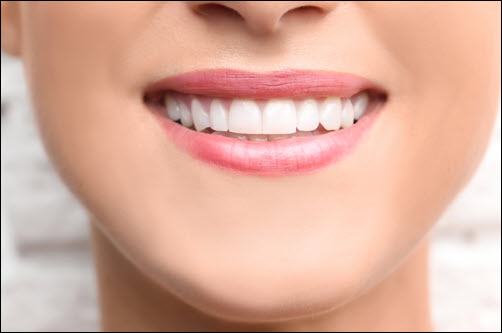Dental Bonding: What’s It All About?
Many of us are not born with camera-ready smiles. And even if you had a great smile when you were younger, you may not be as pleased with it now. It may be due to an injury, habits, or meds that caused staining. Or it could be that teeth came in misaligned or crooked. But for whatever reason, many people find their smile doesn’t make them smile. Dental bonding may be the answer! Fortunately, several cosmetic procedures can give you the smile you want to see in the mirror. One of these options is tooth bonding.
FAQs about Tooth Bonding
What is Bonding?
Cosmetic bonding is the process of having volume added to your teeth to change or enhance their appearance. It is achieved by putting a resin on your teeth. The resin hardens and looks like a natural tooth. Bonding is the same material used for cavities, replacing fillings, or protecting exposed teeth roots due to gum recession.
 What about recovery time?
What about recovery time?
Bonding is a simple procedure that will not require any downtime. No anesthesia is used, so you can return to normal activities following the appointment.
What situations is bonding ideal for?
While it can be used for nearly any cosmetic change, it is most commonly used for repairing decayed, cracked, gapping, or discolored teeth. It is also used to add to the size of one’s teeth. For instance, if you have a tooth that is shorter than the others, bonding can be used to build that tooth up, so it blends naturally with the rest of your teeth.
How long will bonding last?
Providing you care for it as directed, bonding can last ten years before you may need a touch-up. Also, bonding is reversible, unlike other cosmetic dentistry procedures.
How do you care for bonded teeth?
Brush them as you would your natural teeth. Although strong, there are still actions you should take to protect bonded teeth. Don’t chew on ice or non-food items.
-
- Brush and floss your teeth two times a day. When flossing, use an interdental brush or a flossing device for cosmetic dentistry.
- Use a soft bristle brush and non-abrasive fluoridated toothpaste.
- Avoid foods and habits that stain teeth. Our Raver Family Dental can provide you with a list.
- If you grind your teeth, talk to a Raver Family Dental team member about a mouthguard.
What is the difference between bonding and veneers?
Veneers are custom-made shells that adhere to the front surfaces of your teeth. The application requires your dentist to remove some of your teeth’s enamel. Once in place, veneers are permanent, lasting between ten and twenty years. Dental bonding rarely requires enamel removal, is removable, and needs periodic touch-ups.
Can bonded teeth be whitened?
Yes. However, the whitening process will vary based on the bonding material.
Bonding is a great way to get the smile you have always wanted. If you want to learn more about dental bonding, don’t hesitate to talk to one of our team members at Raver Dental.



